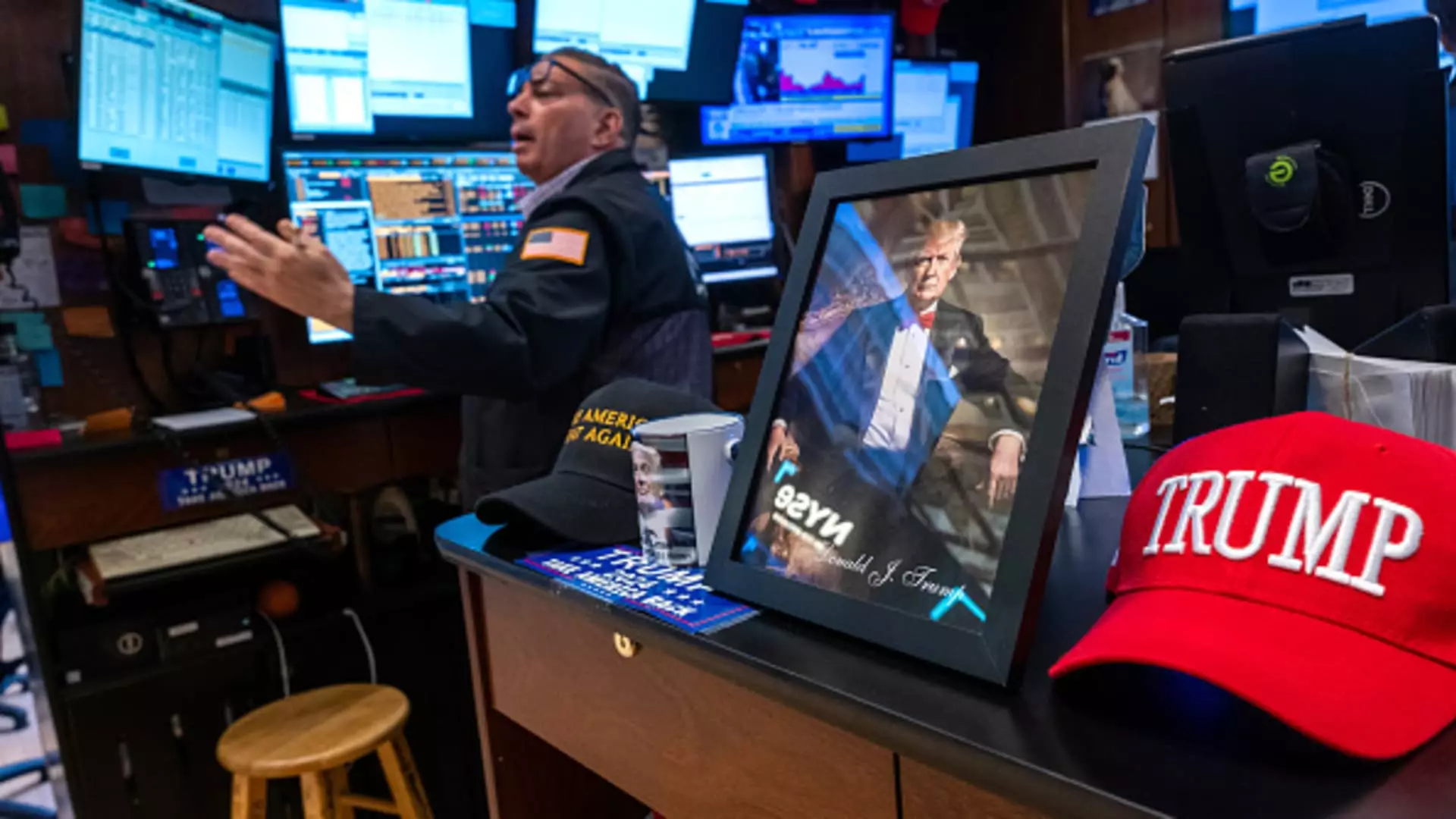The stock market often serves as a barometer for broader societal and economic sentiments. Since Donald Trump took office, it has experienced notable fluctuations—jarring swings that can unsettle the most robust investor. Conservative and liberal financial analysts alike ponder whether these rollercoaster days reflect Trump’s unique economic policies or whether they are yet another manifestation of the natural unpredictability inherent to capitalism. The undeniable truth is that the events of recent years have raised the question: When political drama escalates, how should investors respond?
Admittedly, despite numerous ups and downs, the S&P 500 has managed a slight annualized return of 1.58% during Trump’s second term. But this metric doesn’t paint a full picture. The early days of any presidential administration often dictate a sense of optimism or dread in the investment community, which means that a thorough evaluation is necessary. Volatility means more than fleeting moments of panic; it can extend the anxiety that grips investors into longer periods of skepticism.
The Psychological Impact of Short-term Volatility
Cathy Curtis, a financial planner based in Oakland, put it succinctly—“volatility doesn’t predict direction.” This critical observation highlights two important realities: first, individual investor fear often drives market dynamics, and second, panic selling can prevent investors from capitalizing on long-term gains. Each scare may feel like the beginning of a catastrophic downward spiral, yet history demonstrates that these moments of turbulence often lead to subsequent recoveries.
Indeed, the long-game approach remains crucial. In modern history, most presidential terms have been favorable for the stock market. For example, President Joe Biden’s inaugural five-month period saw the S&P 500 balloon by over 34%. In comparisons, during Barack Obama’s early days, the index grew around 30%. These statistics can be misleading, however, as they tend to overshadow the underlying complexities and challenges inherent to the market. Trump’s era, while not devoid of gains, serves as a perverse reminder that the market often behaves like a skittish animal—more reactive to stimuli than simply moving along a steady path.
A Historical Perspective: Lessons from Past Presidents
When analyzing market performance, it’s essential to draw comparisons from past presidencies. The S&P 500 saw a staggering negative annualized return during George W. Bush’s first term—about 12%—during a time when the Great Recession loomed ominously over the nation. In stark contrast to today’s somewhat stable returns, these historical markers evoke a sense of gratitude towards the current market fluctuations that, while pronounced, are nowhere near as dire.
Douglas Boneparth, also a certified financial planner, insists that “sharp daily declines can test resolve.” His admonition resonates all the more in an era of instantaneous news cycles that propagate fear-based narratives. Investors today must navigate through layers of chaos—and the key lies in resisting the urge to abandon ship during the storm. Behavioral economics tells us that people are not always rational in their financial decision-making, choosing to react emotionally rather than strategically.
The Enduring Truth: Markets Rebound
Taking a long-term view, historical data from the financial markets indicates an upward trajectory over the decades. If an investor had placed $1,000 into the S&P 500 back in 1950 during Harry S. Truman’s presidency, they would see that initial investment swell in value to around $3.8 million today. This staggering number illustrates an undeniable truth: despite the dread and uncertainty sowed by political dynamics, markets historically find ways to rebound.
This analysis begs a far-reaching thought: Could it be that the volatility incited by politics isn’t a deterministic force but instead a temporary shudder in an ongoing growth agenda? With this viewpoint, investors should adopt a mindset rooted in patience and resilience. Investing isn’t merely a financial exercise but a psychological endeavor that requires a degree of fortitude in the face of uncertainty.
While engagement in the political narrative prevailing in the U.S. is fundamental, investors would do well to remember that markets are craftily resilient and habitual in their recovery cycles. It is this resilient spirit that guides the forward motion of capital in the long run, despite the inevitable peaks and valleys of linear time.

